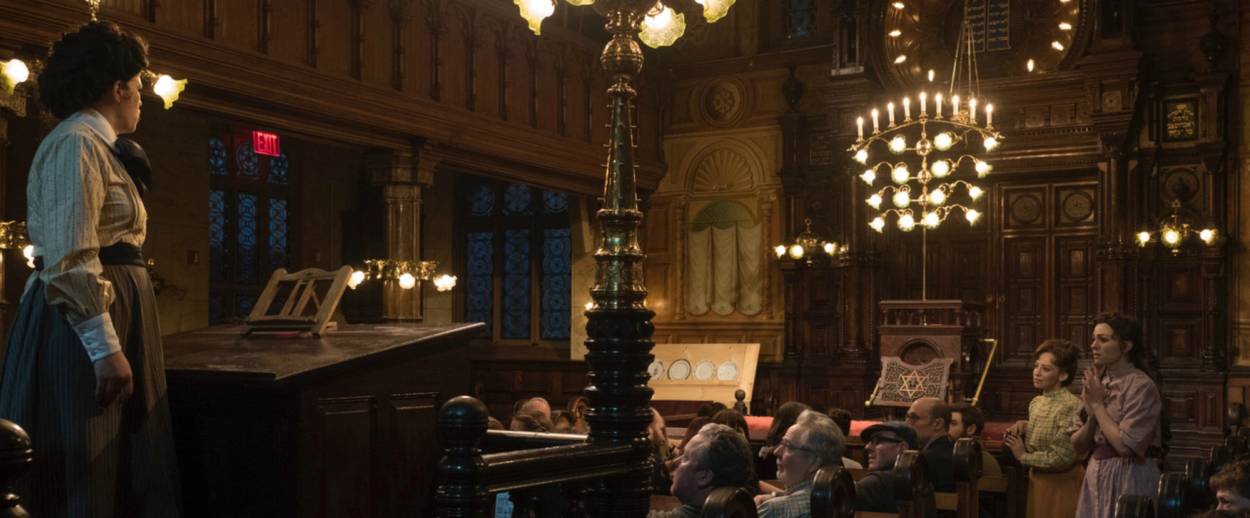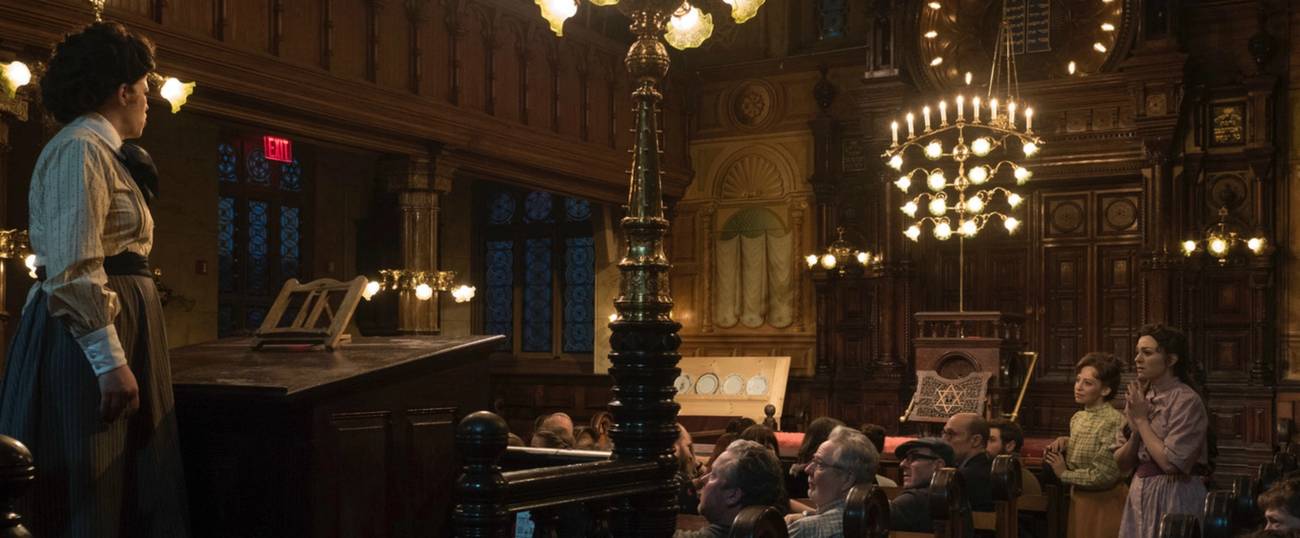A New Opera Remembers the Victims of the Triangle Factory Fire
And with them the hope of change through activism




I’ve got an inkling about why the Triangle Factory Fire has such a hold on me. (“Oh good,” my editor Liel responded when I told him I’d be writing about the fire yet again this year. “I look forward to reading this underreported story.”) It occupies the intersection of immigration, labor issues, the ever-changing Lower East Side, American-Jewish history, and the lives of young women–all topics I’m passionate about. And it’s a horror story. A ravenous fire, a locked door, flimsy fire escapes. As fragile, frightened human beings, we’re drawn to horror. And to the hope of something beautiful arising from tragedy.
As we do every year on March 25th, my daughter Josie and I participated in Chalk, a brilliant participatory art project created by writer/filmmaker Ruth Sergel. Volunteers spread out across the city, writing the names and ages of victims on the sidewalk in front of their former homes, and putting up flyers explaining the fire and adding that sweatshops and unfair labor practices still exist today. There’s something incredibly visceral about getting down on your knees on the cement, thinking about the name you’re writing, taking up the right amount of space for each line, trying to have what yoga teachers call “intention” and rabbis call kavanna.
The first year I chalked, 2007, I did it alone. By the next year, Josie–then seven–had read two books about the fire for beginning readers: The infelicitously titled Rosie in New York City: Gotcha! by Carol Matas and Fire at the Triangle Factory by Holly Littlefield, both still in print. She understood what had happened, she wanted to come with me, and she wanted to chalk for “the youngest girl.” There were three youngest girls–Rosaria Maltese, Kate Leone, and Rosie Grasso, all 14. Ruth gave us Kate, who lived eight and a half blocks from us. We’ve now been writing her name for a decade. Neighbors around 515 East 11th Street know us and say hi. Fourteen seemed incredibly old to Josie when she was seven. Now she’s two years older than Kate will ever be, and 14 seems incredibly young.
This year, I also saw Morning Star, a new opera about the fire, staged by On Site Opera, which does site-specific productions. “We’ve been at the Bronx Zoo, Madame Tussaud’s, the Cotton Club, the West Side Community Garden,” On-Site Opera’s director Eric Einhorn told me in an interview. “We did The Tell-Tale Heart at the Crypt Chapel of the Church of the Intercession at 155th and Broadway. We did a world premiere of a new opera for families around the T-Rex at the Museum of Natural History. It gives these performances an impact you just can’t get in traditional theater. It feels real, because it is. There are no big lighting rigs or scenery and fake walls–you engage and submit to the experience in a different way if it’s true architecture that’s surrounding you.”
The true architecture for Morning Star was The Eldridge Street Synagogue, one of my favorite spaces on the Lower East Side. I’d visited it as a child from Rhode Island on a shul trip; back then it was crumbling and gray and sad. Now it’s been restored to glorious full color, with painted finishes and Moorish details and Victorian carved wood, in an architectural style called horror vacui, or in Jewish, ungapatchka.
“I knew I had to do this on the Lower East Side,” Einhorn said. “It couldn’t just be in New York City somewhere. An old industrial space might have worked, but those are disappearing so rapidly. Then I landed on the idea of a funeral. The opera opens with text from a 1911 newspaper about the funeral procession after the fire. Act II opens and closes with Kaddish. I thought, what if the whole story is a memory play, at a synagogue? I saw this space and it was perfect. It was built in the late 19th century to entice a rock star chazzan from Europe, so it was designed for vocal music. Which NEVER happens in my spaces! We’re always dealing with challenging acoustics! And because religion is part performance, the sight lines were good. There are two bimas and a balcony, so there’s opportunity for 360-degree performance.”
There were only four (sold-out!) performances. The setting was powerful, the voices and music accomplished. The plain pine coffins from the beginning of the first act morphed cleverly into homey tenement furniture; the factory itself was the women’s balcony, drenched in terrifying red light. Would that I’d loved the opera itself, a soapy Jewish telenovela about over-the-top family drama and doomed romance. (You know a character is a villainess when she lights a cigarette off her dead sister’s yahrzeit candle.)
More affecting, for me, was a visit with the Remember the Triangle Fire Coalition and family members of victims to the former Asch building, which once housed the Triangle Factory. On the corner of Washington Place and Greene Street in the West Village, it’s now an NYU science building. The ninth floor is a warren of tiny open workspaces, all beakers and liquid nitrogen. Our group of 20 or so was led to a corner conference room. Looking out the windows, with our backs to the Erlenmeyer flasks and test tube racks, we saw what the sweatshop workers would have seen outside every day: The molded cornices of nearby Georgian and Greek Revival buildings, sculptured gables and overhanging eaves of Gothic and Italianate edifices that have survived the last century virtually unchanged. We stood in a moment of silence for the victims, looking at each other and at the gabled roofs and wooden water tanks around us. And we looked down to the pavement below.
Then we saw the tiny, steep, winding staircases, the only remaining interior fixtures from 1911. The building was designed with the latest fireproof construction. (Great, but the doors to the one of the two stairwells were kept locked, there were no sprinklers, the firehose had rotted through and the valve rusted shut, and the tiny fire escape collapsed under the weight of terrified workers.) As we took turns filing into the stairwell (we couldn’t all fit at once), an elderly lady said excitedly, “This was where they found 40 bodies stacked up, right here!”
The commemoration is over for another year. (Almost. The Evergreens Cemetery, on the border of Brooklyn and Queens, is hosting an exhibition of the Triangle Fire Memorial Quilt through April 11.) But I’m feeling more hopeful than usual about the possibility of meaningful change. The Triangle Fire–and activism led by young people, like the teenaged Clara Lemlich–led to better building codes and improved fire safety protocols. Laws passed aimed at ending child labor, raising low wages, and improving unsafe workplace conditions. Sweatshops still exist around the world, of course; workers here at home are still exploited. But the grief and outrage leveraged by young labor leaders like Lemlich and safety advocates like Frances Perkins actually succeeded in making people’s lives safer. Watching the young activists of Parkland, Florida try to safeguard the lives of today’s youth, I feel as though maybe they can succeed too.
Marjorie Ingall is a former columnist for Tablet, the author of Mamaleh Knows Best, and a frequent contributor to the New York Times Book Review.